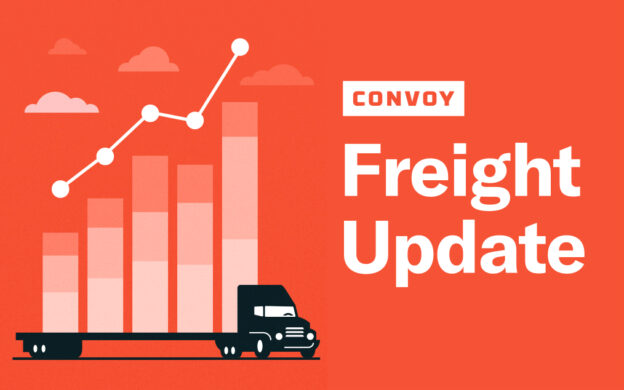March in December — Awaiting the “Parcelpocalypse”
Freight Research, Shippers • Published on November 17, 2020
Retail spending took a brief breather in October, slipping slightly on its relentless upward march that began in June. The annual pace of growth in retail sales edged lower to 8.5% compared to 8.8% in September, the first year-over-year deceleration since states began to reopen after the first wave of Covid-19 induced lockdowns. But as we’ve become accustomed to in 2020, a month ago can feel like a lifetime.
October’s brief freight market lull has given way to a frenetic November. Freight demand is again surging as retailers prep for record online shopping this holiday season; extended families unable to see each other in person for months will send record care packages around the country; and stores will stock up for the possibility of a new wave of community lockdowns as the Covid-19 pandemic rages on. The logistics demands of vaccine distribution loom on the horizon.
Non store retail sales — the Census Bureau’s monthly retail metric that most closely approximates online sales — increased 3% from September and 29% from October 2019 to $88.2 billion, edging out May 2020 for the highest year-over-year pace ever reported and flaying past August to set a new nominal record.
While the Census category “non store” retail is often used as a proxy for ecommerce, in reality it is a broader category, covering retailers that do not have conventional storefronts — including primarily online, tv and mail-order/catalogue retailers; door-to-door sales, portable stalls and vending machines. The Census Bureau separately reports a quarterly estimate of total ecommerce sales (Q3 data are due to be published this Thursday), but that does not include traditional retailers who also have smaller ecommerce channels. In practice, the growth of online ordering for in-store or curbside pickup and last-mile distribution from stores has blurred the classic distinction between brick-and-mortar and ecommerce retailers. By our estimates, about 90% of the “non store” category is currently ecommerce.
The October pace of non store sales implies ecommerce sales on the order of $80 billion, close to 30% above the $62 billion in ecommerce sales reported a year ago (not seasonally adjusted monthly pace). Holiday-related truckload volumes are currently tracking about two weeks ahead of schedule.
There are still two big questions when it comes to the impact of the ecommerce boom on the freight market:
- First, is the early holiday parcel surge an acceleration of the normal wave, or an extension? In other words: Will we also see holiday-related truck demand slow a week or two earlier than normal, or did the holiday surge just get longer? (My bet is on the latter.)
- Second, is whether ecommerce-driven truck demand will remain elevated on the other side of the pandemic. Long-term investments in new capacity make sense if there’s no end in sight to elevated package demand, but if parcel delivery drops post-pandemic, then the industry might be setting itself up for a capacity hangover. (My bet is that it will diminish somewhat, but remain high by historic standards — although there are some nuances here that I discussed in our latest Monthly Market Outlook video.)
As the nation prepares for a new wave of community lockdowns amid an unprecedented holiday season, December’s bluster and cheer could end up feeling a lot like March’s springtime frenzy in the freight market.
In addition to the retail spending data from the Census Bureau this morning, the Federal Reserve Board published data on October industrial production and capacity utilization. Factory capacity utilization deteriorated from September in 34 of the 57 industrial categories reported, with total capacity utilization falling by 0.4 percentage point from September to 71.5%, below its historic average of 77%. All in all, factory capacity utilization has plateaued over the past three months suggesting few opportunities for industrial productivity improvements as long as social distancing remains a requirement.
View our economic commentary disclaimer here.



